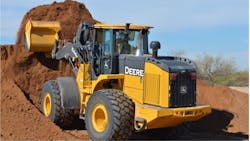How to Use Work Order Systems to Drive Reliability
Key Highlights
In this article, you will learn:
- How to use specific type codes to categorize work orders.
- How to implement real-time status codes to monitor work order progress.
- How to differentiate between repair downtime and scheduled downtime.
- How to measure reliability by tracking work orders.
You can try to prepare the best meal in the world, but it won’t happen unless you have the ingredients in your pantry. The same is true with information and information systems. The data you have available, its definition, and its collection invariably limit the metrics you can develop.
Good cooks know what is in their pantry and improvise to come up with the best solution possible. We need to do the same and use existing data and data-collection systems to their maximum in order to obtain the data we need even if we must compromise a little. Work orders are a good example. We can set them up to collect a wealth of data and use them as the first and most important source of information about performance of our fleet.
Most, if not all, work order systems have the ability to code individual work orders in many different ways and track the status of the work as it progresses toward completion. Let’s look at how we can use these abilities to provide the data needed for two key metrics: reliability and downtime.
The type code and reliability
Work order codes are often defined by the user. It is absolutely essential to use one of the available coding fields to define a “type” or “reason” code for each and every work order. I recommend the following six and only the following six “type” codes:
- Green: Scheduled preventive maintenance. The work order is issued to perform a routine hourly, daily, weekly, or monthly scheduled maintenance action. Work is planned and scheduled to minimize possible impacts to production.
- Yellow: Routine replacement. The work order is issued to replace normal wear items such as ground engaging tools as and when needed. Work is planned and scheduled in advance to minimize possible impacts to production.
- Orange: Condition-based maintenance. The work order is issued because a condition assessment or inspection has identified the need for specific work to be done in order to prevent or preempt a possible future breakdown. The work is backlogged and scheduled to minimize any impact to production.
- Red: Repairs or RED events. The work order is issued because the machine has experienced a reported emergency down (RED) event due to an on-shift failure. Repairs must be performed immediately; there has been or will be an impact on production.
- Blue: Capitalized repairs. The work order is issued to perform major repair, rebuild, or renovation work on machines that are either off site or not immediately required for production. Costs are capitalized.
- Black: Abuse. The work order is issued because of an accident or operator abuse. The cost will not be charged against the machine and will be recovered elsewhere.
These work order type codes make it possible to:
- Measure the effectiveness of condition-based and preventive maintenance programs. Effective programs will result in most, if not all, work being done on green, yellow, and orange work orders red work orders reduced to a minimum.
-
Measure the effectiveness of safety and training programs designed to eliminate black work orders. Effective programs will eliminate the occurrence of black work orders.
The codes also enable us to define and measure reliability in a simple, straight forward way: Reliability equals the number of red work orders per 1,000 hours worked.
The status code and downtime
Work order status codes are required to determine backlog and trace the progress of maintenance and repair work through the equipment organization. They are an essential part of the management process and help to ensure that work is planned and progressed efficiently.
The following six status definitions should be used, and close to real time (daily) reports should be available to show the status of all work orders that have not, as yet, been closed:
- Pending: Starts when a green work order is auto-generated in response to a trigger scheduled event or when any other work order is opened as needed. Pending work orders have not, as yet been assigned to technicians.
- Assigned: Starts when a work order is assigned to a technician. No time has, as yet, been posted to the work order.
- In progress: Starts when time is booked to the work order.
- On hold: Starts when the technician indicates that work is on hold and no work will be done due to a shortage of parts or some other issue.
- Complete: Starts when the technician indicates the work on the machine is complete and it is ready to return.
- Closed: Starts when the shop manager has reviewed and finalized the work order. All costs are in, and no more costs may be posted to the work order.
These work order status codes make it possible to define the following downtime periods:
- Repair downtime equals the elapsed on-shift time between pending and complete status for a red work order.
- Scheduled downtime equals the elapsed on-shift time between in progress and complete status for a green, yellow, or orange work order.
It is extremely difficult to routinely record and agree on downtime in the field on an event-by-event basis. The work order type codes and status definitions set out above together with time card information will, however, make it possible to measure downtime and take required action.
Making a distinction between repair downtime and scheduled downtime and using the opening of a red work order as the starting time for repair downtime emphasizes the fact that on-shift failures are more critical than scheduled downtime.
Using the in-progress status as the start of scheduled downtime for green, yellow, and orange work orders means that time spent planning and scheduling work to reduce production impacts does not count against the maintenance organization or the machine.
Reliability and downtime are two different concepts. Reliability measures the effectiveness of all the maintenance organization as it strives to reduce the frequency of down events and their associated impacts on production. Downtime measures the efficiency of the maintenance organization as it strives to keep the fleet up and running for as much time as possible.
Both are important and both must be measured.
The type codes and status definitions described here will enable us to obtain the data we need to calculate two important metrics by using the coding structure built into any good work order system. The benefits far outweigh the costs, and there is no reason at all why we should not measure reliability and downtime on a regular basis.
The given codes and work order system will make it easy for us to obtain the required ingredients for our pantry.
About the Author

Mike Vorster
Mike Vorster is the David H. Burrows Professor Emeritus of Construction Engineering at Virginia Tech and is the author of “Construction Equipment Economics,” a handbook on the management of construction equipment fleets. Mike serves as a consultant in the area of fleet management and organizational development, and his column has been recognized for editorial excellence by the American Society of Business Publication Editors.
Read Mike’s asset management articles.
